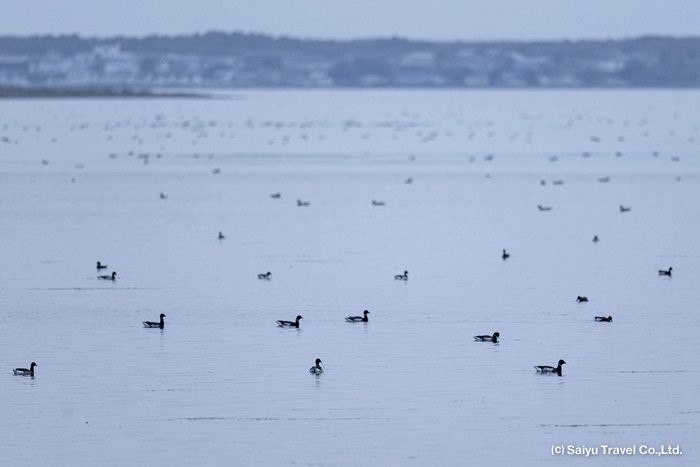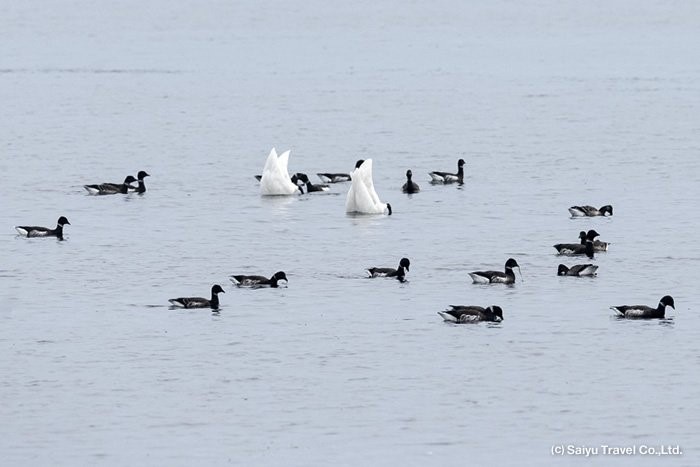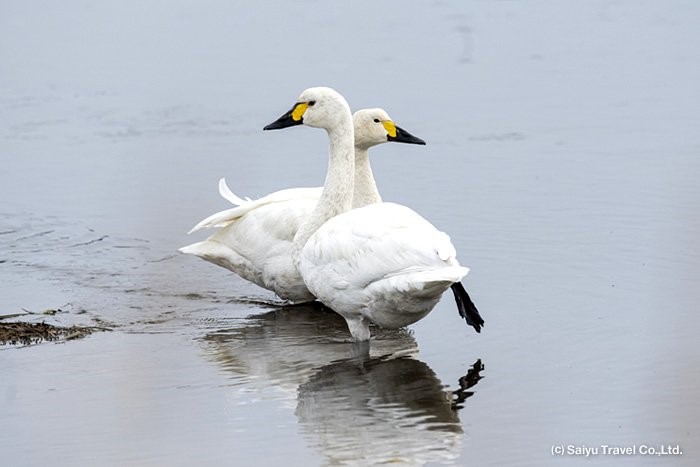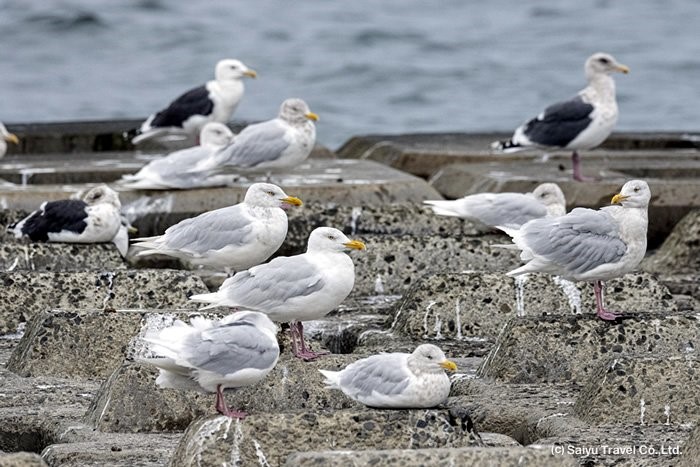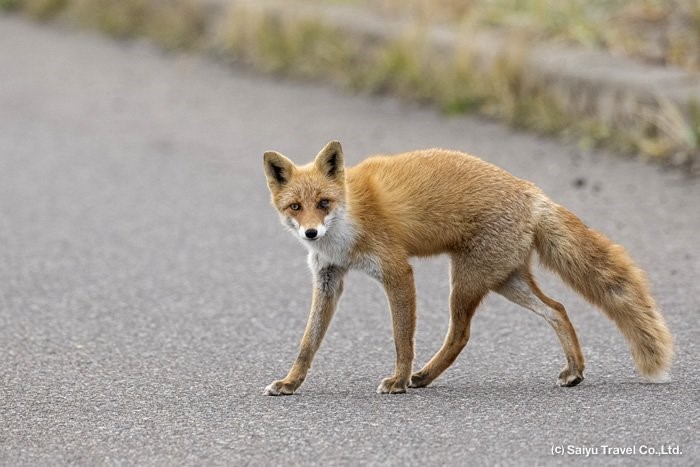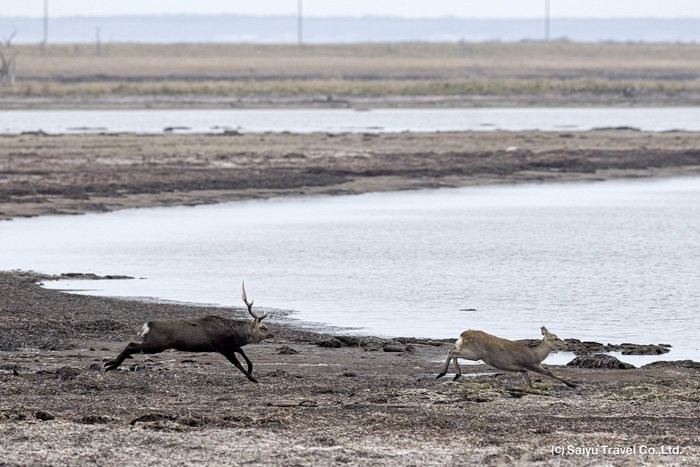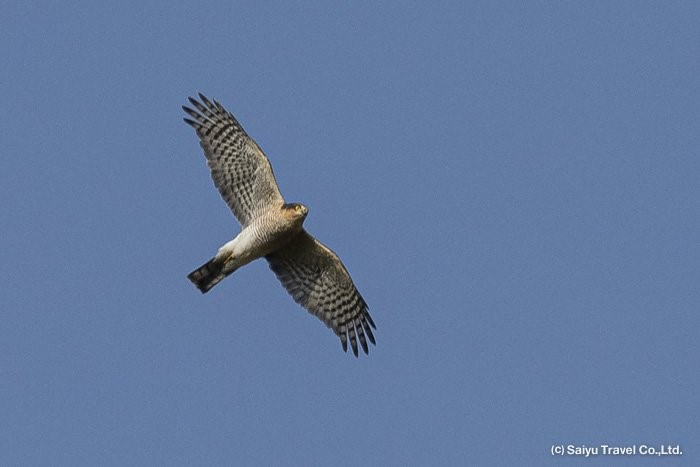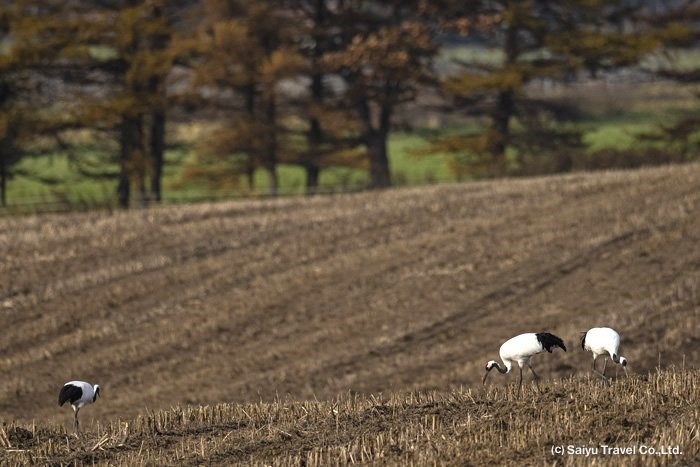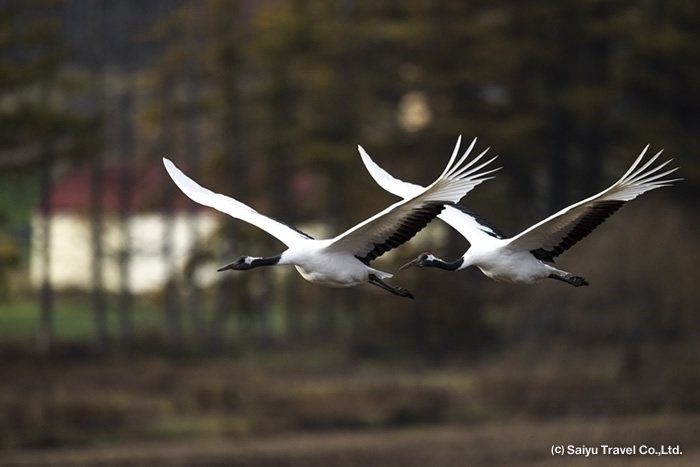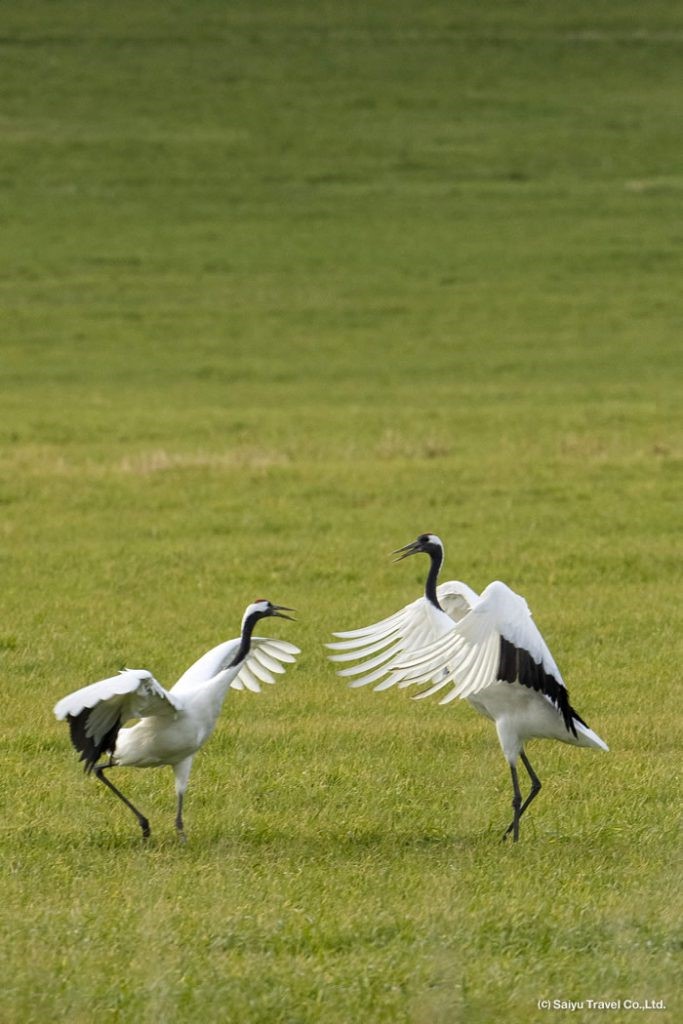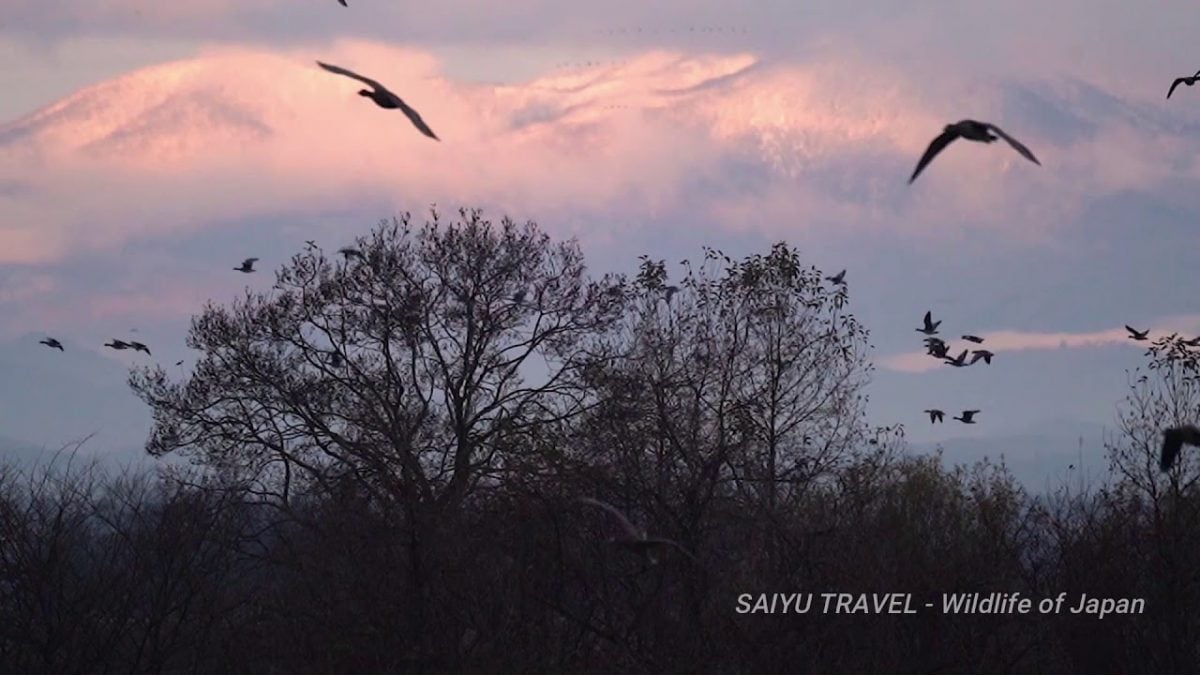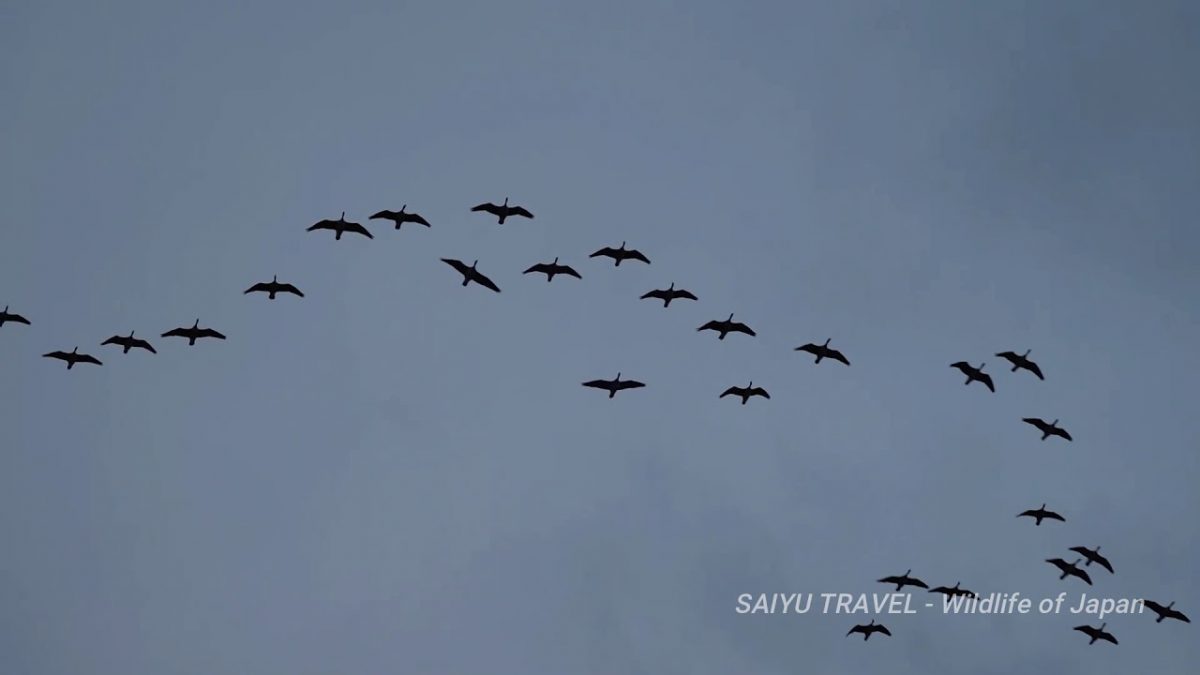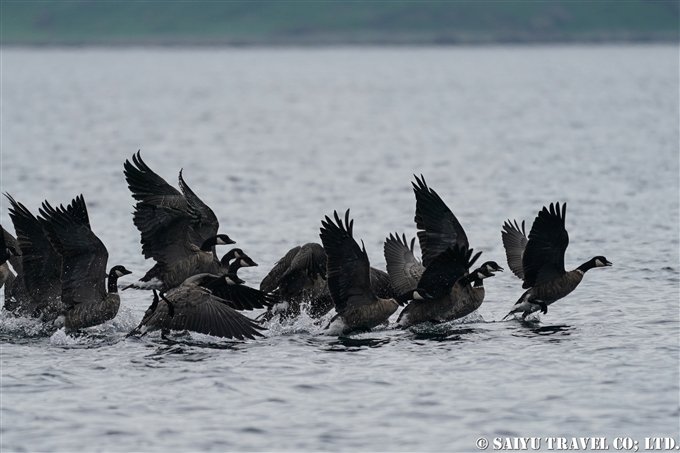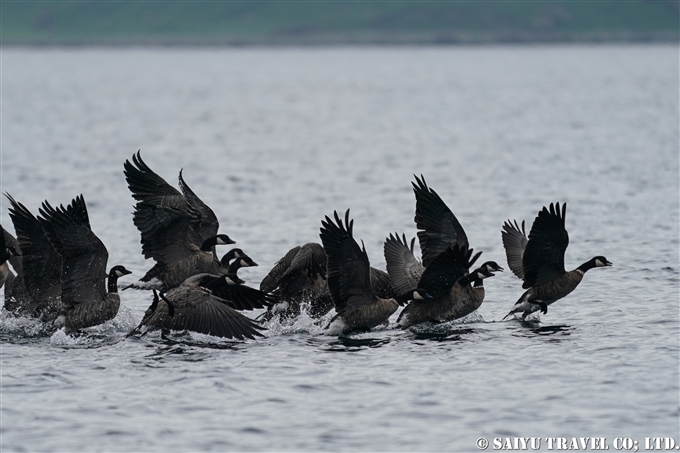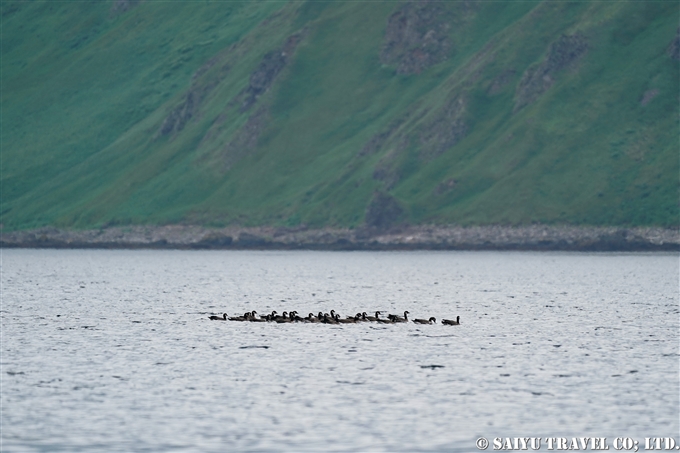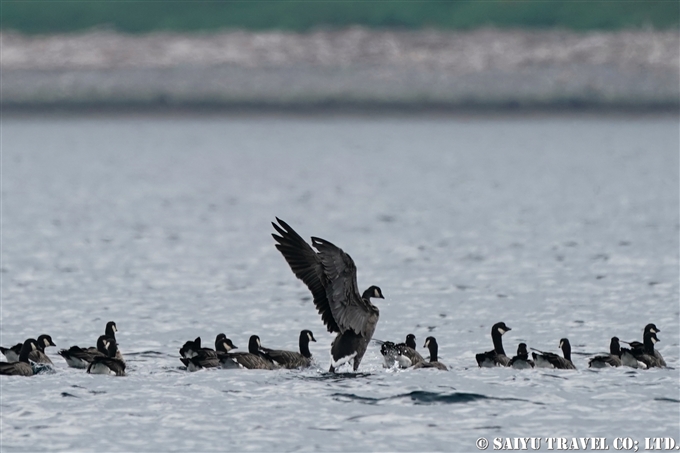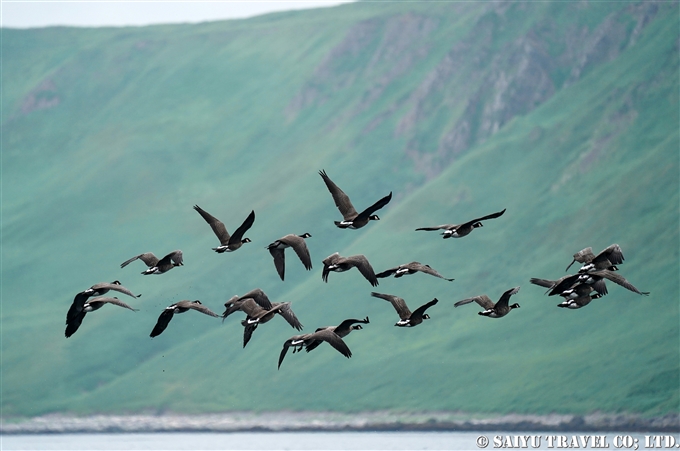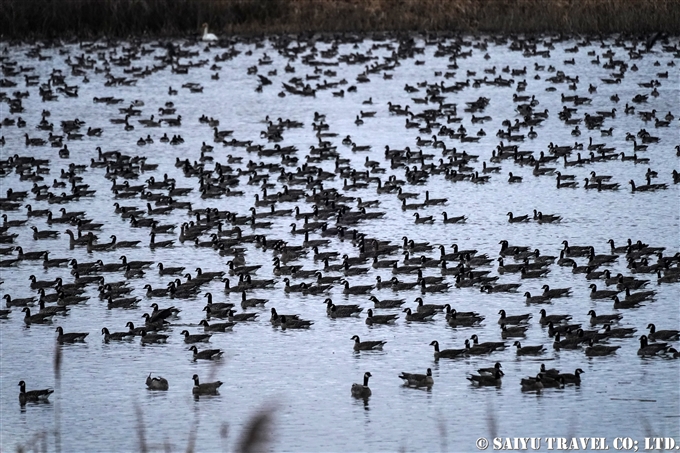
This is the second part of Kaito Imahori’s tour report of the October 26 – 30, 2021 tour.
On the 3rd day of our tour, I went in search of the Snow Goose just before daybreak. Just upon my arrival, I heard the noise and when I looked out, the geese were flying all around me!

I went down to the wetland, and could see many Snow Geese and Cackling Geese. Over and over again, I could see about 1000 Snow Geese swirling over my head, as they took flight and landed. It was a relatively short distance away and I could observe them from the car, so it was a great time.

In the afternoon of the second day at that location, I went to observe the Ural Owl, but unfortunately, I could not find it. In the park, I saw the Hokkaido Squirrel, running about and they were so cute.


Again in the evening, I went in search of the flocks of Cackling Goose, but they were in a totally different spot. The evening light shone on them beautifully as they were spread out across the open field.


On the 4th day, we went in search of the pikas in the mountains. When I was waiting quietly in the morning, I could hear it calling and could make a sighting as well! While I was there, I heard a noise of rustling in the distance and saw a brown bear, so decided to descend from the mountain for safety. Then as we neared our car, and did a quick search nearby, we found another pika and everyone in the group could see it! We were so elated!
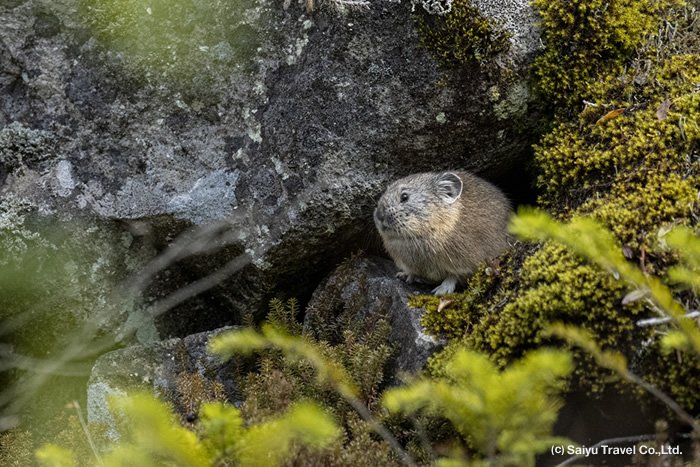
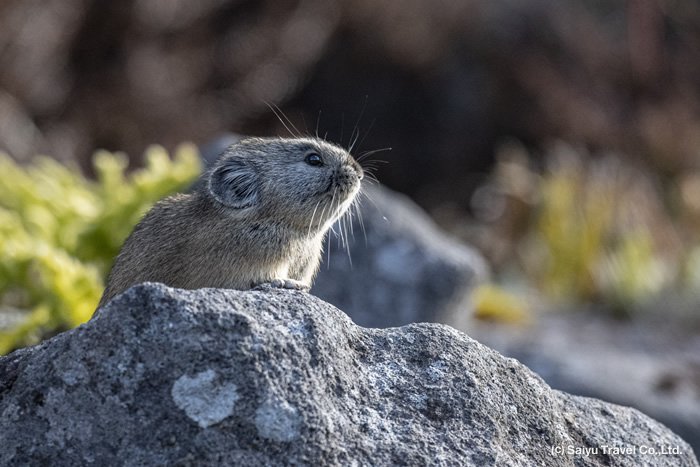
After we descended from the mountain, we looked for the Hokkaido squirrel in the afternoon. I was able to capture this lovely moment of a little squirrel standing on a carpet of yellow leaves of the Ginko trees.

In the evening, upon the request of one of the group members, I went looking for a Hazel Grouse. I couldn’t get a good photo, but we did get a great chance to see a male Hazel Grouse take flight directly in front of us. We ended this day watching the sunset from the observatory, as it silhouetted the Hidaka Mountain range.

On the final day of the tour, I set out before sunrise to catch the flocks of snow geese, but the swamp was so quiet. When the sun rose, we could see there were no geese in the water. It seems they all returned to the mainland sometime in the evening the day before! It was too bad we could not see them on our final day, but as we looked out over the quiet wetlands, I offered a prayer that they could all safely navigate their migration ahead.

As a final stop, we stopped in Obihiro City’s park to look for some more bird species. We were looking for bird species that we still had not yet seen, like the Great Spotted Woodpecker, Marsh Tit, Eurasian Nuthatch, which we were able to see. We even got to see another Hokkaido Squirrel.



We were able to see a total of 7 species of Geese during the tour. It is only in Hokkaido that you can see all the species that can be found in Japan, in one single tour. And easily, at that, if you move from location to location in time to see their migrations. In the spring, the geese will come back where there is still snow on the ground, so please come then to see them! Thanks for reading this report and hope to see you here!
Photo & text: Kaito IMAHORI
Tour date: 26-30 Oct 2021, Tokachi, Hokkaido
*Contact us, Saiyu Travel for more information about wildlife and bird watching in Hokkaido. We can make various arrangements for your trip. We have a guesthouse, Shiretoko Serai, in Rausu, Shiretoko Peninsula.
Tags: Bird tour Japan, Wildlife of Japan, Tokachi heiya, Bird watching tour Japan, Eurasian Nuthatch, Birds of Hokkaido, Hakugan, Bird Watching Japan, Marsh Tit, Birds of Japan, Kaito Imahori Photography, Wildlife in Japan, Great Spotted Woodpecker, Wildlife Photography tour in Japan, 知床サライ, Hokkaido Squirrel, Wildlife tour in Japan, Kaito IMAHORI, Pika, Birds Photography of Japan, Shiretoko Serai, Snow Geese, Wildlife in Hokkaido, Snow Goose, Cackling Goose, Tokachi Plain, Cackling Geese, Geese migration, Birding tour Japan, Wildlife of Hokkaido, 十勝平野




